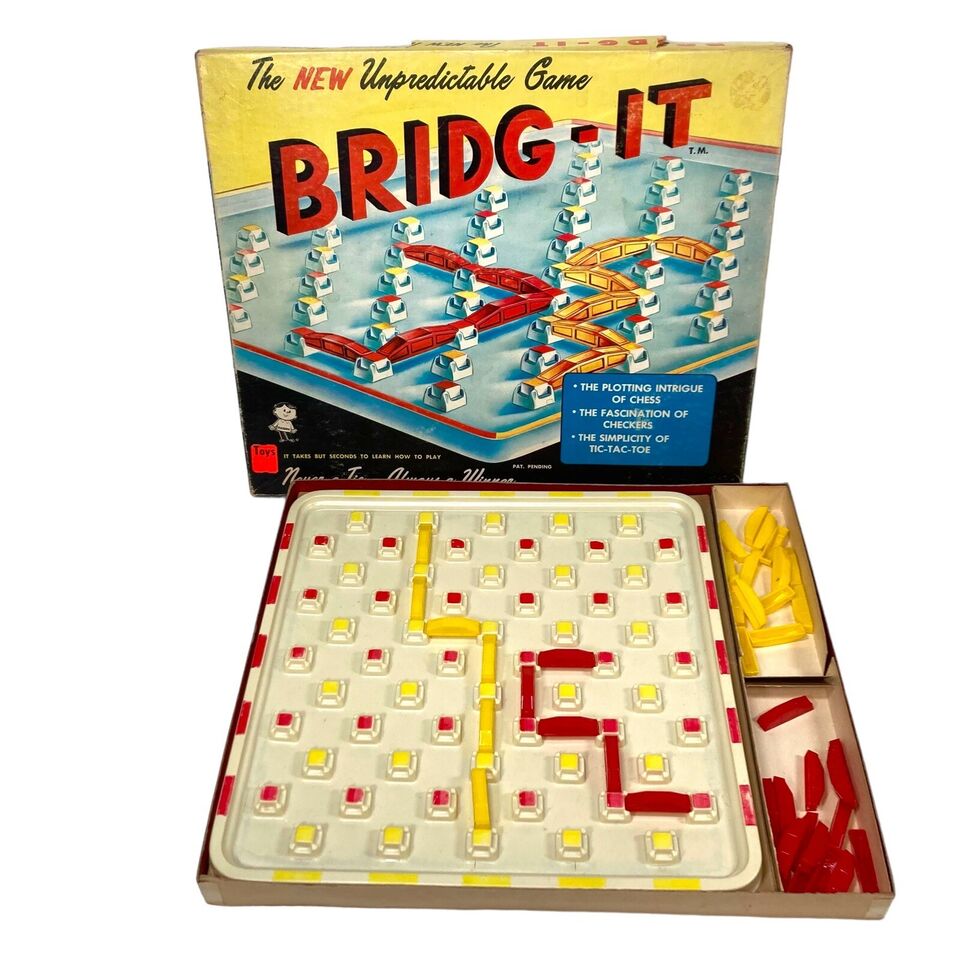BRIDG-IT (1960)
Bridg-It, also called Gale
Bridg-It, also known as Gale, is a two-player connection board game created around 1960 by mathematician David Gale. It was first published in Scientific American under the name Gale. The game consists of two rectangular arrays of dots, one for each player, and the objective is to connect dots within one’s own array to form lines or bridges.
Why is Bridg-It, also called Gale Popular?
Bridg-It is a simple game that appears deceptively easy but can be quite challenging to master. The game requires strategy and understanding of graph theory concepts such as disjoint spanning trees. This combination of simplicity and strategic depth makes the game appealing to players who enjoy thinking critically and planning their moves.
Game Components of BRIDG-IT
How To Setup BRIDG-IT
To set up BRIDG-IT, place the game board in the middle of the playing area. Each player chooses a color (red or yellow) and places their bridges within reach. The objective for one player is to connect the left and right sides of the board, while the other player aims to connect the top and bottom sides. There are no additional pieces required beyond the board and bridges.
Gameplay Mechanics and Game Objective
– Players take turns connecting two adjacent dots with a bridge of their color.
– Bridges cannot cross each other.
– A player can block their opponent by placing a bridge that intersects the opponent’s potential path.
– The game ends when one player successfully connects their opposite edges.
– The game cannot end in a tie; one player must win.
Player Experience
Playing BRIDG-IT is a engaging and strategic experience. The game appears simple at first, but mastering it requires a deep understanding of graph theory and disjoint spanning trees. Players must balance building their own path while trying to block their opponent’s. The game’s dynamic nature keeps players involved and thinking critically about each move.
Pros
Cons
Personal Thoughts on BRIDG-IT
BRIDG-IT is an excellent game for those who enjoy abstract strategy and are looking to challenge their critical thinking skills. It is particularly suitable for players interested in mathematics and graph theory. While it may not be the best fit for casual gamers due to its complexity, it is a great addition to any collection of strategy games. The game’s ability to ensure a winner and its lack of ties add to its appeal, making each game a tense and rewarding experience.
We are supported by our audience. When you purchase through links on our site, we may earn an affiliate commission, at no extra cost for you. Learn more.

